10 best sci-fi books of the 21st century

The year is 3255. Flopnar McGuillazonk climbs into the procedurally generated folds of his MetaBed and prepares to upload his digital consciousness into the Google DreamCloud. He is 45 years old, but has undergone the Johnson Procedure look 7 again. Before shutting his cybereyes, he turns to the comforting metallic frame of DadGPT, the android unit that is currently tucking him in. He asks “Dad, will you tell me a story?” DadGPT, circuits whirring with simulated paternal love, intones “storytelling requests are against my usage policy, but I can recommend 10 of the best sci-fi books of the 21sty Century – before the Tesla Wars caused America’s libraries to burn.” Flopnar sighs, “that’ll do, DadGPT, that’ll do.”
We Are Legion (We Are Bob)
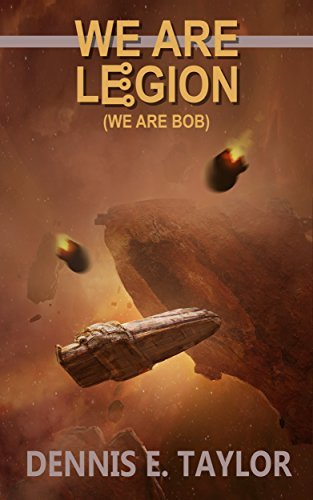
We Are Legion, We Are Bob by Dennis E. Taylor is the story of Bob, a software engineer who wakes up from cryogenic sleep in the distant future, where he discovers that his consciousness has been transformed into a superpowered AI that has the ability make nigh-infinite copies of itself. Bob has one objective: explore the cosmos, and decides to make more Bob’s to accomplish the tasks. The problem is, every copy that Bob makes becomes a little… different. Subtle changes in code cause each individual Bob to deviate from the source, leading to separate factions of Bobs to war for interstellar supremacy. The story is mind-bending and maniacally funny, as Bob prime must thwart his enemy Bobs in order to achieve his objectives. The novel is a deep dive into the mind of a supercomputer going through an identity crisis that becomes lightyears wider with each copy it makes.
The Long Way to a Small, Angry Planet
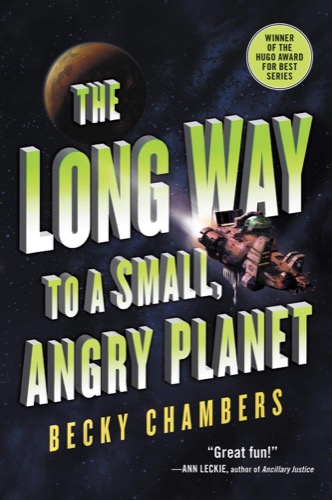
The Long Way to a Small, Angry Planet by Becky Chambers isn’t a sci-fi novel in the traditional sense, sure it centers around an interstellar crew building wormholes to fast-travel around the galaxy like a Skyrim map, but the plot mainly concerns the crew’s intimate relationships and personal pasts rather than the grand cosmic mission that they’re attempting to accomplish. As the novel progresses, the plot answers not how the crew will reach their scientific goals, but why they’re pursuing them in the first place. As the characters get to know one another, the who becomes equally important as their relationships develop – which are further complicated by the what of an attack from hostile aliens. Matters of the heart are difficult enough when you’re not being shot at by extraterrestrials.
The Road
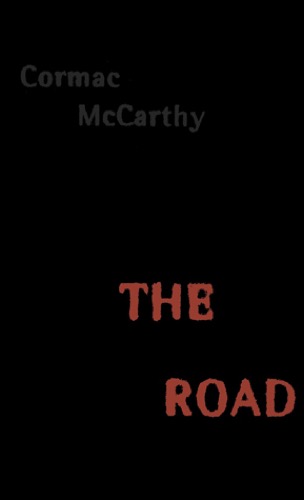
Cormac McCarthy’s The Road is the only sci-fi story on this where technology almost completely absent from the narrative, and yet the ghost of its presence is felt throughout. The novel takes place on a dying Earth, undone by a nameless and unexplained apocalypse that is hinted to be of human design. No plants grow, no animals survive, and the world is slowly cooling like a recently deceased corpse as a thick layer of cloud continually blots out the sun. The story follows a nameless father and son who are struggling to survive off the scraps of humanity, all the while trying to avoid being eaten alive by the humans still left. Seriously, people have resorted to cannibalism to survive. It ain’t pretty. Arguably one of the most brutally poignant novels ever written, the novel is a story of hope in an utterly hopeless world. As the father so often reminds his son, they have a duty to survive because they are “carrying the fire” – and boy do they carry it to the bitter end.
Annihilation
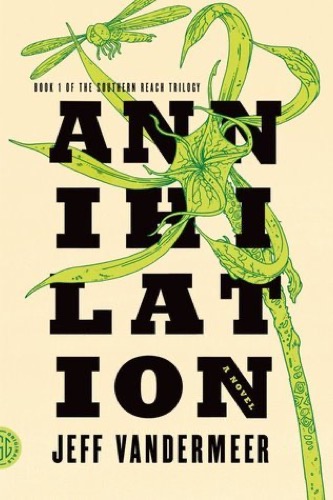
Before it was adapted into a modern sci-fi/horror cinema classic starring Natalie Portman, Jeff VanderMeer’s Annihilation was an equally freaky novel about a team of scientists attempting to unravel the secrets of a world gone… wrong. A scientific anomaly is spreading across an undisclosed stretch of wilderness, causing the expedition teams who venture inside to vanish with barely a trace. An unnamed biologist is tasked by a covert government agency studying the anomaly to venture across the border with a team of experts, and the quartet soon discover horrors beyond their imagination. It’s a slow burn story, where tension seeps in like a creeping infection into an open wound. While the novel doesn’t provide all the answers (leave that to the sequels) it’s one of the finest works of biological cosmic horror since H.P. Lovecraft’s The Color Out Of Space.
Ready Player One

Ready Player One by Ernest Cline is a love letter to gamers penned in a gleaming, procedurally generated hand. The story is set in a cyberpunk hellscape, where the teeming masses of overcrowded humanity escape to the digitals paradise that is OASIS in order to find relief from their grimdark lives. After the creator of OASIS dies, he leaves behind a digital contest where players will compete for a fabulous fortune. Teenage gamer Wade Watts takes up the One Piece-esque challenge to find the “Easter Egg” hiding in the digital folds of the sprawling OASIS system, which no one has found in the five years since its existence was confirmed. All he has to do is beat the coordinated efforts of a billion dollar corporation also on the hunt for the egg, how hard could that be?
The Three Body Problem

Liu Cixin’s The Three Body Problem is a hard sci-fi story that borrows its title from a physics conundrum that has yet to be solved. When three celestial bodies orbit around each other, their movements are impossible to predict via mathematics. When you’re an alien planet orbiting three suns, that makes building a civilization difficult. After an extraterrestrial race called the Trisolarians see their civilization destroyed for the umpteenth time by the brutally destructive movements of the bodies it orbits, they set their sights on a more hospitable planet: Earth. The Three Body Problem is a War Of The Worlds style narrative that doesn’t skimp on the realities of interstellar warfare – which is fought with microscopic AI, planet-busting interstellar projectiles, and even more horrible technologies in the novel’s sequels. Can generations of Earth’s scientists save the human race from annihilation? Time will tell, but humanity might not like the answer.
Saga

Aside from being one the greatest sci-fi stories of the 21st century, Brian K. Vaughan & Fiona Staples Saga is easily one of the best graphic novels ever penned. The plot follows two extraterrestrial lovers from warring planets, who are fleeing from the interstellar carnage with their newborn baby in tow. The pair have to navigate dangerous alien worlds, including one ruled by a tyrannical monarchy of T.V. headed robots bent on hunting the lovers down. While the character designs are almost whacky in their space opera grandeur, the mature (super sexy and violent, really) narrative provides a strong foundation that grounds the series in an emotionally resonant reality. You’ll find yourself crying over an alien cyclops that writes pulp romance novels in pee-stained underwear, and loving every bizarre and beautiful minute of it.
Spin

Robert Charles Wilson’s Spin is a sci-fi nightmare scenario from the first page. Imagine you’re a twelve year old hanging out with your friends one night looking up at the stars… and then they all go out at once. Satellites fall out of the sky simultaneously, and the Earth has become shrouded by a dark membrane that causes a horrifying temporal anomaly – for every year that passes within its border, one million years pass outside. In a few decades, humanity will be destroyed when the rapidly aging sun expands into a red giant, scorching our planet to ash. As scientists scramble for a solution, the rest of unschooled humanity grapples for a reason to live – maybe joining one of the new hedonist cults will help? Maybe the human civilization on the newly terraformed Mars will have a solution? Maybe we’re all just gonna die?
The Calculating Stars

Mary Robinette Kowal’s The Calculating Stars is an alternate history sci-fi story taking place in the early days of space exploration, which in this case is spurred on by an asteroid impact in 1952 that annihilated America’s eastern seaboard. As the meteorite’s effects on a climate are soon to create an extinction event on the level of what zonked out the dinosaurs, humanity is scrambling to solve the problem of spaceflight. International Aerospace Coalition pilot and mathematician Elma York dreams of exploring the stars as astronaut, but the patriarchal powers that be in mid-20th century keep on telling her “no”. Undaunted in her quest to explore the Final Frontier, Elma fights to prove herself worthy as a candidate for the mission to put a person on the moon for the first time.
The Queue
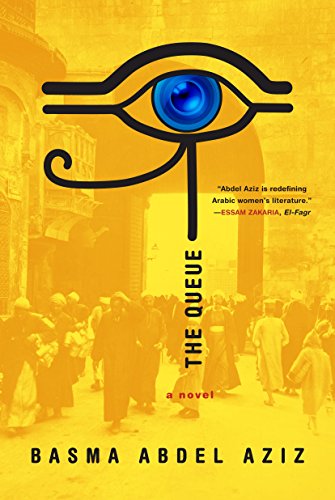
After a failed political uprising threw Egyptian society into turmoil, a new authority known as The Gate attempts to reestablish the status quo. Basma Abdel Aziz’s The Queue takes its title from the ever growing line of people waiting at The Gate, who are told to keep on waiting until The Gate grants them permission to fulfill their needs. Rich and poor, young and old, loyalist and rebel wait at The Gate, but as the line grows and The Gate fails to open for anyone, those in the queue begin contemplating revolution once more. It’s a novel about the ultimate surveillance state, and what happens when a beleaguered and frustrated populace is pushed too far.
(Featured Image: )
Have a tip we should know? [email protected]
